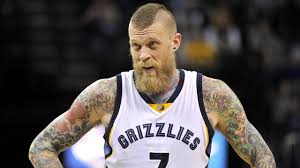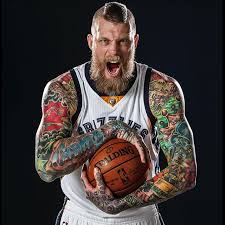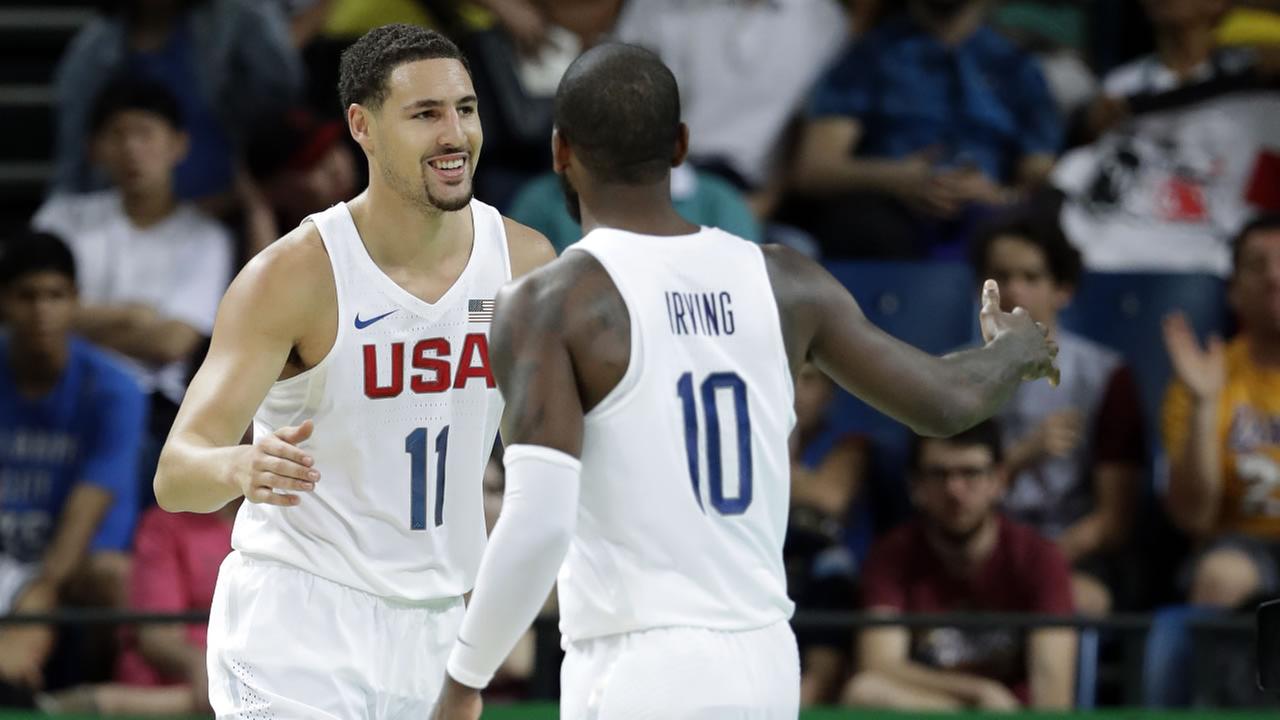
The Birdman is Flying Into Cleveland
2016-08-16

In a summer that saw stars such as Kevin Durant and Al Horford switch teams, the Cleveland Cavaliers decided to focus on bringing the majority of last season’s team, a smart move considering that group brought Cleveland it’s first major sports championship in 52 years. General Manager David Griffin did make a few moves though, saying goodbye to Matthew Dellavedova, Timofey Mozgov, Sasha Kaun, and Dahntay Jones while bringing in Kay Felder, Mike Dunleavy Jr., and Chris “Birdman” Andersen. Felder has received more attention than any second-round pick joining a championship team in recent memory, and Dunleavy’s fit with the Cavaliers has been dissected as well, but what does Andersen bring to the Wine & Gold?
Welcome to #TheLand, Birdman.
DETAILS: https://t.co/1P2KxftlRc pic.twitter.com/zHh8JJn6J4
— Cleveland Cavaliers (@cavs) July 22, 2016
To understand Chris Andersen the basketball player, one has to know something about the path he took to get to where he is today. Andersen grew up in extreme poverty in rural Iola, Texas after his father left his mother to raise her only son and his two sisters on her own. Andersen’s father had built only the frame of a house before he left, and the rest of the family was force to live in a barn that was already on the property. The family struggled so badly that they often had to live off the land and depend on the kindness of neighbors. At one point when he was in middle school, Andersen’s mother sent him and his sisters to live in a group home in Dallas simply so they could have enough food to eat and a warm bed to sleep in. The kids would remain there for nearly three years before returning home, when Andersen’s uncle moved to Texas to finish building the house his father had started before he left.
Basketball wasn’t a focus of Andersen’s as a child, and he picked up the sport in high school after the varsity coach told him that he might have a chance to earn a scholarship. Unfortunately Andersen’s grades weren’t good enough to get into the University of Houston, so he instead spent a year at Blinn College in Brenham, Texas, where he averaged 10.7 points, 7.7 rebounds, and 4.7 blocks in 21.3 minutes per game, leading the National Junior College Athletic Association in blocked shots. He wasn’t known for his skill level, but Andersen was already gaining a reputation as an exciting, high-energy player.
Confident he was ready to play in the NBA, Andersen left Blinn after one season. While he thought that he would be selected in the 1999 NBA Draft, there was one small problem, Andersen didn’t realize he had to officially apply for the NBA Draft. Luckily, his high school coach was able to arrange for him to play with the semi-pro Texas Ambassadors for a series of exhibition games. From there, Andersen signed with the Jiangsu Nangang Dragons of the Chinese Basketball Association. This began a two-year trek through the basketball wilderness that included stops with the New Mexico Slam of the International Basketball League, the Fargo-Moorhead Beez of the International Basketball Association, and the Sugarland Sharks of the Southwest Basketball League (none of these teams—or the leagues they played in—exist anymore).
Andersen’s professional basketball career got its first break in the summer of 2001, when he joined, ironically, the Cleveland Cavaliers for the 2001 NBA Summer League. He was then signed by the Phoenix Suns that September, but was subsequently waived just nine days later. In late October, Andersen attended the inaugural training camp for the NBA Development League. He made such a mark that he was selected first overall by the Fayetteville Patriots in the first ever D-League Draft. After just two games with the Patriots, Andersen became the first NBDL player ever called up to the NBA when he signed with the Denver Nuggets on November 21.
Upon his arrival in the NBA, Andersen immediately made an impact by doing the things that he’s still known for today. In his first five seasons in the NBA, Andersen never averaged fewer than 14.7 rebounds or 3.5 blocks per 100 possessions. His field goal percentage also improved every year during that time, going from 33.8% as a rookie to 57.1% in his fifth year. He participated in the 2004 and 2005 NBA Slam Dunk Contests was incredibly popular with his teammates and the fans in Denver and later with the New Orleans Hornets, with whom he signed a four year deal. Unfortunately, the tough times were not done for the man nicknamed “Birdman” by former teammates Junior Harrington and Kenny Satterfield.
On January 25, 2006, Andersen was disqualified from the NBA for violating the league’s anti-drug policy. Because his infraction involved a “drug of abuse”, Andersen was permanently banned from the NBA, but was also eligible to apply for reinstatement after two years. There was no guarantee that he would be reinstated, but Andersen went to rehab and made the needed changes to his life with the help of his friend, attorney Mark Bryant, who also became his advisor. He then spent the rest of the next two years getting into better shape than ever as he waited for the opportunity to be reinstated.
Andersen’s reinstatement was granted on March 4, 2008, and he immediately rejoined the Hornets, who held his rights, for the rest of the season. That summer, Andersen returned to the Nuggets, where he spent the next four seasons. Despite being 30 years old and having missed most of the previous three seasons, Andersen was better than he had ever been before. In each of his four seasons with the Nuggets, Andersen shot at least 54.6% from the field, and averaged no fewer than four blocks and 14.4 rebounds per 100 possessions. He also finished in the top ten in both total blocks and blocks per game in both the 2008-2009 and 2009-2010 seasons, despite never playing more than 22.3 minutes per game. Andersen’s combination of interior defense, rebounding, and finishing at the rim helped the Nuggets make the playoffs in each of those four seasons as he teamed with Kenyon Martin and Nene to form one of the most physical frontcourt rotations in the league. Unfortunately, nagging injuries began to take their toll on Andersen, and he was waived by the Nuggets on July 17, 2012 via the amnesty clause, even though his salary for the upcoming season was less than $5 million.
Andersen remained a free agent at the start of the 2012-2013 season, as teams seemed to shy away from him due to his previous issues off the court. Then, in early January, the opportunity of a lifetime arose. The defending NBA champion Miami Heat, looking to improve their interior defense, brought Andersen in on a 10-day contract. The fit was perfect, and Andersen became a fixture of the Heat’s rotation, providing the defense and rebounding the team was looking for, as well as serving as their unofficial enforcer.
Andersen was even better in the playoffs, as he shot an NBA Playoff record 80.7% from the field on the way to helping the Heat win their second consecutive championship—the first of Andersen’s career—defeating the San Antonio Spurs in seven games. Andersen returned to the Heat for the 2013-2014 season, shooting a career-high 64.4% from the field during the regular season as Miami returned to the NBA Finals, only to lose to the Spurs in five games. After turning down overtures from the Cavaliers during the summer of 2014, when his teammate and fellow free agent LeBron James returned to Cleveland, Andersen signed a two-year $10.4 million contract to stay in Miami. He was still a core member of the rotation for the 2014-2015 season, but was relegated to the bench last season, playing just 36 minutes over seven games for the Heat before he was traded to the Memphis Grizzlies in a three-team deal on February 16.
The Grizzlies had been decimated by injuries, losing centers Marc Gasol and Brandan Wright for the season. They provided Andersen a chance to prove he still belonged in the NBA, and—as has been the case his entire career—he took the opportunity and ran with it. In 20 regular season games (14 starts) with the Grizzlies, Andersen shot 54.8% from the field, while averaging 12.9 points, 12.5 rebounds, 1.4 blocks, and a career-high 2.0 steals per 100 possessions. While he only shot 41.7% in the playoffs, Andersen averaged two blocks and an amazing 21.1 rebounds per 100 possessions as the Grizzlies were swept in four games by the Spurs. The Birdman couldn’t quite fly as high as he used to, but he had also proven he was still an effective NBA player.
Now, at 38 years old, Andersen has rejoined former teammates LeBron James and James Jones as the Cavaliers look to defend their NBA championship. He’s declined a bit with age, especially in terms of athleticism and finishing at the rim, and attempts to add a three-point shot have been mixed at best. Despite that, Andersen remains a solid rebounder and shot blocker who adds toughness to the Cavaliers and immediately becomes the team’s enforcer, something that the Cavaliers are known to value. He’s also known as a great teammate, and has already earned the trust of James, who Andersen flourished playing alongside. From an analytics standpoint, his Real Plus-Minus score of -1.08 last season aren’t anything to write home about, but it’s worlds better than the -4.24 RPM of the man he replaces, Timofey Mozgov. It’s also higher than the RPM scores posted by players such as Nerlens Noel, Donatas Motiejunas, Marreese Speights, and Kosta Koufos last season. Perhaps most importantly, the Cavaliers are getting a player who has shown the ability to rise to the occasion throughout his career, and that is the kind of player that every championship team needs.



Good thing we have Kyrie instead of that fraud guy. He would’ve wilted under the pressure
Next up… ESP
DeRozan with the 360 JAM!
THIS is the KD I expected to see in these games…
Boogie just doesn’t look like he knows what he wants to do when he drives…
Glad Campazzo didn’t injure Kyrie rolling up on his leg…
Campazzo try’n to take on DeAndre…
Kyrie with the inbounds oop to Jordan!
If KD shoots like this, nobody will beat USA…
Hard to believe…
We lived through a golden age of FIBA ball.
Meanwhile, Australia and Canada could both be formidable with young stars like Simmons and Wiggins coming up…
and Delly.
U.S. got a little sloppy there at the end. Gotta clean that up.
Still a 16 point lead, but was 25 at one point…
Well, that was fast…
‘Merica going scorched earth on ‘Tina right now…
Kyrie is still magical…
https://vine.co/v/5M76rrWOB1P
Kyrie looks very focused since coming back into the game…
U.S. tearing it open now.
Kyrie with the crossover into the teardrop!
Wow! Kyrie just returned the favor on Campazzo!
Nice timing on the two step by Butler!
Campazzo is a bigger actor than Ginobili… which is saying something…
Yeah… US looks WOKE now…
Just turned on the game. US starting lineup was getting everything Argentina had. The Lowry, Butler, George perimeter lineup kicked up the D and the U.S. went on a 16-2 run.
That and KD knocking down shots and getting Boogie easy looks down low…
KD and Boogie bringing em back…
US having a tough time with Argentina early… Settling for too many long jumpers… Kyrie getting torched by Facundo Campazzo thus far…
Thanks for bringing the bird man story and very well written too.
He came to play for the CHAMPS!
Give it a rest. Warriors Fan hasn’t been inappropriate once on this site.
Champions!!!!!!!!!!!!!!!!!
AS A RESIDENT OF NEARBY SANUSKY / CEDAR POINT I WANT TO THANK LEBRON AND HIS FOUNDATION FOR HIS GENEROUSITY OF TREATING 5000 FAMILIES TO A GREAT DAY AT CEDAR POINT YESTERDAY—- AS GREAT OF A PLAYER THAT YOU ARE YOU ARE EVEN A GREATER PERSON AND THAT IS WHERE YOU WILL TRULY LEAVE YOUR MARK IN THIS WORLD !!
He really is the best.
The big lebowski is so good.
http://images-cdn.moviepilot.com/images/c_scale,h_583,w_583/t_mp_quality/nvi7wqdrist2urvqrv27/10-things-to-do-after-watching-the-big-lebowski-459725.jpg
LeBron has indicated that he really wants an “enforcer” on the bench, I remember it coming up when Perkins left, and it makes a ton of sense for a team that tends to play very physical games late in winning series against teams with nothing to lose. Birdman’s value as an enforcer who may also be able to spell TT without seeing a drop in rebounding makes this signing pretty valuable.
Between JR and Birdman we’ve got enough ink to fill out LeBron’s game checks
NOT BAD COLS —-EITHER THE BEER IS WORKING OR YOU ARE SOBER —–LEONARD SKYNARD’S— ” FREE BIRD ” ( ONE OF MY ALL TIME FAVORITES ) SHOULD BE HIS INTRODUTIONARY SONG
There once was a dude named Birdman
He had as many tattoos as a dude can
He plays with LeBron
To get his ringz on
He’s a better center than a certain RussiAN
Birdman is one more reason why this team has improved in the offseason.
If he can still play like the highlights in the above, he will be an excellent addition. Plus, you gotta like the clip of the confrontation. The guy goes to make of show of getting in Birdman’s face and quickly thinks better of it. That reminds me of LeBron’s first NBA game ever. One of the TV guys said something like “There has been so much hype about LeBron. Some of the vets are talking about roughing him up to show him that he is now playing with the big boys”. The color guy says: “those were guys that hadn’t… Read more »
Great story, Mike. I didn’t know about his up-from-nothing background.
He’s not likely to do much. But he’s still better than Mozgov and Kaun.